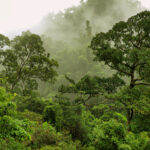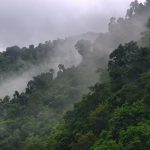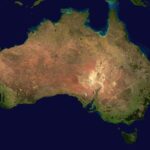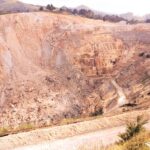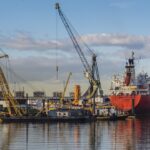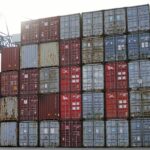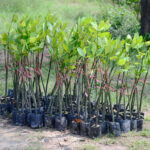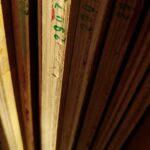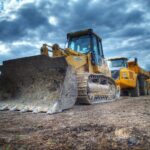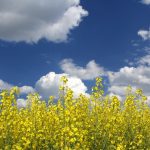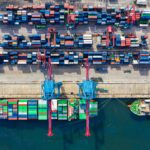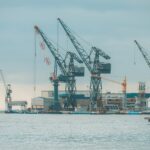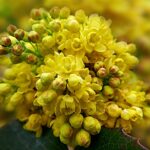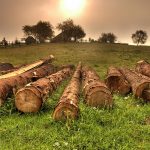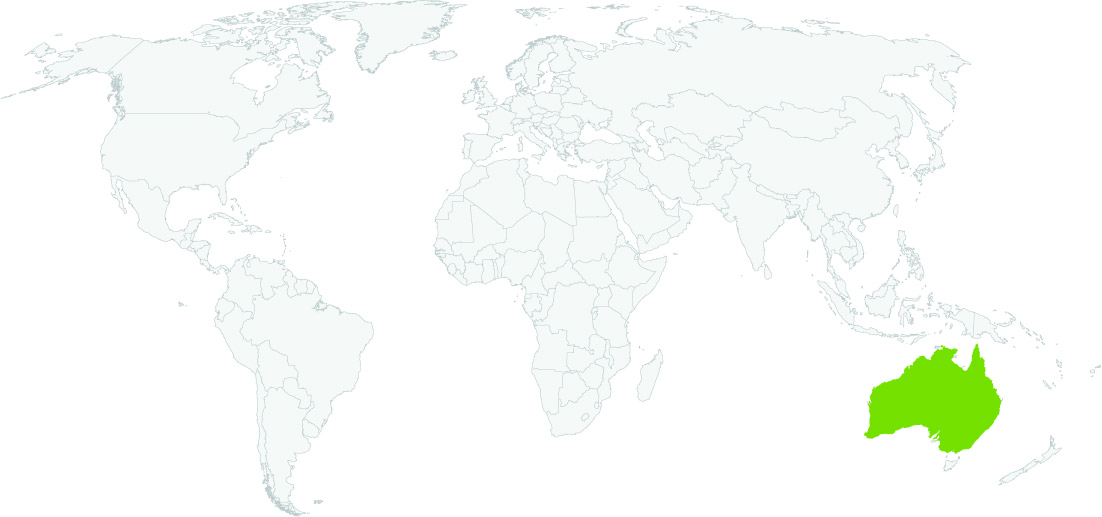
A former magistrate and one of Australia’s most experienced scientists have launched an extraordinary attack on the New South Wales government’s logging agency, describing it as effectively a “criminal organisation” that should be shut down after a string of court convictions. The corporation has been convicted of more than a dozen environmental offences, including a judgment in the land and environment court last year that found the agency was likely to reoffend and had poor prospects of rehabilitation.
The Australian Government wants to grow sustainable forest management in Papua New Guinea (PNG) and is now working with the country’s forest authority to improve plantation forestry and grow regional wood supply.
As of 3 March 2025, Australia’s illegal logging laws have changed. Importantly, this includes changes to due diligence requirements for importers and processors of regulated timber and timber products.
The Illegal Logging Prohibition Act 2012 has been updated to ensure it remains fit-for-purpose and aligns with international best practice. The new Illegal Logging Prohibition Rules 2024 replace the previous Illegal Logging Regulation 2012 and outline the updated due diligence requirements.
All imported timber sold in Australia could carry a source of origin label under a new Australian Forest Products Association (AFPA) proposal to boost local supply and crack down on illegal imports. The proposal, one of several put to the main parties ahead of the next federal election, will be plastered on billboard and radio advertisements in marginal seats.
Under the proposal, the regulations would be backed by an enforcement regime that could use new technology to trace the provenance of timber. According to Diana Hallam, AFPA’s CEO, new country of origin labelling is about giving consumers confidence that timber (and paper) products are sustainably sourced.
The nephew of former Prime Minister Hun Sen has threatened to sue a prominent businessman who alleged that US$9 million was stolen from a Chinese investor who sought government approval for a mine.
The report later states that
He was featured prominently in The Sting, a 2012 book by investigative journalist Nick McKenzie about Australian law enforcement’s attempts to tackle the international drugs trade.
According to McKenzie, Hun To was a target of an Australian police investigation in 2003 into the smuggling of heroin from Cambodia to Australia in timber shipments.
McKenzie claimed Hun To only evaded arrest thanks to the intervention of Australian Embassy officials in Phnom Penh seeking to avoid a diplomatic incident.
Friday’s release of NSW Forestry Corporation’s annual report shows that the taxpayer is again propping up the destruction of our native forests. FCNSW reported a $29 m loss in its native hardwood division, almost double the figure reported last year.
The Nature Conservation Council of New South Wales (NCC), the state’s leading environment advocacy organisation, has said it is time to transition to a 100% plantation-based industry and stop the wholesale destruction of endangered species habitat at the cost of the taxpayer. As well as running at a loss, FCNSW has been ordered to pay almost $500,000 in fines and legal costs over the past five years – mostly for damage to threatened species habitat and endangered ecological communities, according to NCC.
Results of the Australia’s Department of Agriculture, Fisheries and Forestry’s (DAFF’s) testing trial on timber species and harvest origins has clearly demonstrated the need for the Albanese Government’s tougher illegal logging laws with some alarming results from the study, Chief Executive Officer of the Australian Forest Products Association, Diana Hallam said today.
The recently completed DAFF trial tested 146 timber products and 39 distinct species using different scientific methods including DNA, stable isotope, trace element, wood fibre and wood anatomy analysis. A quarter of the tested products were found to be inconsistent with declared species, origin, or both. Product testing of laminated veneer lumber (LVL) product showed 80 per cent originating in China and 20 per cent from Russia, with the Russia component not declared.
Mining is one of the fastest growing causes of deforestation, with a new report published by the World Resources Institue (WRI) revealing that 1.4 million hectares of forests, an area the size of Montenegro, was lost to the extraction of coal, iron and industrial minerals for the 20 years to 2020.Since the turn of the century, mining has increased by 52%. This includes tropical primary rainforests, some of the world’s most important ecosystems where mining is a growing loss driver, and Indigenous and local community territories, where people depend on forests for their livelihoods.
More than 89% of the loss is concentrated in just 11 countries, including Indonesia, Brazil, Russia, the United States, Canada, Peru, Ghana, Suriname, Myanmar, Australia and Guyana.
According to the Indian Centre for Science and Environment, the country’s 2022 demand for timber was 63 million cubic metres—30 million cubic metres for domestic production and 33 million cubic metres from imported sources.
Uruguay is India’s top market for sawlog, with India’s Ministry of Commerce and Industry reporting that Uruguyans account for more than 20% of total trade for the first six months of 2024 (487,700 cubic metres) ahead of Australia (14.4% or 347,600 cubic metres), Ecuador (12.1% or 293,300 cubic metres), Argentina (9.1% or 213,700 cubic metres) and the United States (7.6% or 193,000 cubic metres).
India has emerged as one of the United States’ most important export markets, with 116,000 cubic metres of softwood lumber shipped from the West Coast to India last year alone. Already its fastest-growing hardwood market, the US is capitalising on India’s construction industry and, in the process, making up for a drop in Chinese demand—with total lumber exports almost tripling for the first six months of 2024 over last year.
While import volumes remain lower in 2024 compared to 2023, India is competing with China to become the world’s largest consumer market for structural timbers. The Modi Government is grappling with a 19 million-unit housing shortage, which will double over the next five years.
Fuelling India’s demand for roundwood is a decision made in 2020 to reverse a 27-year ban on using timber in public buildings.
Earlier this year, Wood Central reported that the Australian Department of Agriculture, Fisheries and Forestry finished reviewing the Illegal Logging Prohibition Regulation 2012, involving multiple foreign governments, 11 non-government associations, 20 industry associations, and significant timber importers and brokers.
That process led to the Australian Senate debating a new bill, the Illegal Logging Prohibition Amendment (Strengthening Measures to Prevent Illegal Timber Trade) Bill 2024, which will boost powers to seize, enforce, and publically disclose non-compliances at the port.
The depletion of mangrove forests in Tanintharyi Region has constrained the illicit crossborder trade of charcoal into Thailand, even as prices remain high, but small-scale producers in Myanmar’s deep south have few other ways to make a living.
Myanmar charcoal accounts for more than two thirds of Thai imports of the commodity, with smaller quantities coming from Laos, Cambodia and Malaysia. While many households and businesses in Thailand have switched to cooking mostly with gas, using charcoal only for barbecues, Thai customs data suggests that almost 80 percent of charcoal imports are re-exported, to countries including China, Japan, Australia and Bahrain.
This article summarizes the science behind World Forest ID, but also gives a glimpse at the support provided by Australia, work now being done by IKEA (which used to source extensively from Russia and Belarus), and a recent Belgian investigation into illegally sourced wood imports.
Also reported here: Keeping Sanctioned Russian Timber Out of the EU Is Tricky. This Nonprofit Has a Solution. – WSJ
Until early 2022, timber importers relied on Russia for 40% to 50% of all LVL, formwork and beams entering the Australian building and construction supply chains. However, that changed in mid-2022 when the European Union banned Russian and Belarusian timber exports, whilst PEFC and FSC suspended certification schemes in both countries. And whilst Australia opted to slap a 35% tariff on Russian timber rather than following the lead of the EU and the UK in introducing a total ban, FSC and PEFC deemed that all products coming from Russia and Belarus (irrespective of secondary ports) are conflict timber, and therefore, cannot be used in PEFC and FSC claims. In 2022, the publisher of Wood Central exclusively revealed that record shipments of Russian LVL were entering Australian ports via China following Putin’s invasion of Ukraine.
Until early 2022, Australian timber importers relied on Russia for 40% to 50% of all LVL, formwork and beams entering the Australian building and construction supply chains.
However, that changed in mid-2022 when the European Union banned Russian and Belarusian timber exports, whilst PEFC and FSC suspended certification schemes in both countries. And whilst Australia opted to slap a 35% tariff on Russian timber rather than following the lead of the EU and the UK in introducing a total ban, FSC and PEFC deemed that all products coming from Russia and Belarus (irrespective of secondary ports) are conflict timber, and therefore, cannot be used in PEFC and FSC claims.
According to the Australia’s EWPAA, “signs of non-conforming LVL include missing branding details, questionable certification, and a lack of acceptable documentation.”
The global extraction of raw materials is expected to increase by 60% by 2060. The stripping of Earth’s natural materials is already responsible for 60% of global heating impacts, including land use change, 40% of air pollution impact, and more than 90% of global water stress and land-related biodiversity loss, says the report, due to be released in February.
A new isotopic data platform will support the verification of Australian agricultural and food product claims and environmental credentials by telling us where our food comes from, and how it was grown.
Westpac has become the first Australian big four bank to set a zero deforestation target for agriculture but there are no signs the others will follow.
After 2025, dairy, beef and sheep farmers who bank with Westpac won’t be able to clear natural forests for agriculture, although they will still be able to remove regrowth.
Westpac says the measure is part of its commitment to the United Nation’s net zero banking alliance, which it joined last year, and came after consultation with the sector.
Brazil’s forest exports are booming, and it is now supplying cross-laminated timber panels, glulam, parquet and laminated flooring, sandwich panels, railway sleepers and rounded saw wood to global markets.
And with the return of left-leaning Luiz Inácio Lula da Silva as president of Brazil, environmental protection has shot to the forefront of the political agenda, with the government now subsiding export shipping costs in a rush to seize the commercial opportunities accompanying the global green transition.
Brazil’s federal government subsidies surged to the highest level in six years in 2022. These subsidies extend to the shipment costs for manufactured wood exports such as laminated beams, CLT panels, glulam, parquet and laminated flooring, sandwich panels, railway sleepers or just rounded saw wood.
Mon Zin, a founding member of the Global Myanmar Spring Revolution, told the Green Left and Socialist Alliance forum that timber and wood imports increased between 2020–21.
The Pacific Islands are working towards a new Pan-Pacific Standard for Sustainable Forest Management. The new standard could include Fiji, Papua New Guinea, the Solomon Islands, Tonga and Vanuatu.
the new standard would greatly assist Trans-Tasman importers and provide a “green lane” for tropical timbers, most importantly demonstrating sustainable forest management. In New Zealand, the new standard could significantly assist in monitoring certified products imported into and sold through NZ building and construction networks.
Government official states that importers caught violating Australia’s ILPA were issued fourteen fines were issued of $13,320 each, and that the illegal trade can comprise up to 10% of timber products entering Australia, undercutting local Australian production, regional businesses, and communities.
Australia’s Department of Agriculture, Fisheries and Forestry has fined 14 furniture importers over $186,000 last week because they didn’t act to minimise the risk of importing illegally harvested timber.
Fiji Hardwood Corporation Ltd (FHCL)’s Forest Certification Gap Analysis and Roadmap Report for certifying mahogany has been launched.
FHCL was established in 1998 as a State-owned Enterprise to manage the Government of Fiji’s hardwood plantations.
Fiji developed its own Mahogany Branding and Licencing Act, which was endorsed by Cabinet in 2011.
A ‘critical shortage’ of timber is restricting builders from meeting housing demands, according to NSW Agriculture Minister Dugald Saunders.
Australia’s housing construction industry is facing a growing demand for timber which isn’t in stock, with an estimated reliance on imported timber to be doubled by 2050.
The Bob Brown Foundation has said an issue with a decades-old piece of legislation means the Tasmanian government has been illegally logging forests in the state for years. The government has denied the issue rendered past logging operations “illegal”, however Resources Minister Guy Barnett said he intended to introduce legislation that would remove doubt.
The state-owned Forestry Corporation suffered a $20 million loss last year, with NSW taxpayers forced to pay $441 per hectare to log critical native forests. The net cost of destroying more than 13,500 hectares of red gum, ironbark and cypress trees – largely for woodchip exports and firewood – was $6 million, while one-off recovery costs following the Black Summer bushfires soared to $14 million.
Fiji’s mahogany sector was estimated to be valued at $213 million, according to the last Forest valuation in 2008.
Another Forest valuation is expected to be carried out this year. However, without proper certification, the true value of mahogany exports is yet to be realised. Most of Fiji’s mahogany timber market is South America and the United States of America, where it is used for producing guitar components.
Australia and New Zealand markets however have closed off mahogany timber trade from Fiji until proper certification is realised.
Guardian analysis of trade data has revealed that China received more than half the total tonnes of seafood, wood and minerals exported from the region in 2019, a haul worth $3.3bn that has been described by experts as “staggering in magnitude”.
The country’s mass extraction of resources comes as China has deepened its connections with governments across the region, amid a soft power push that sees it rivalling the influence of the US and Australia in the Pacific.
Last month, Wood Central reported that the Australian Department of Agriculture, Fisheries and Forestry finished reviewing the Illegal Logging Prohibition Regulation 2012, involving multiple foreign governments, 11 non-government associations, 20 industry associations, and significant timber importers and brokers.
That process led to the Australian House of Representatives debating a new bill, the Illegal Logging Prohibition Amendment (Strengthening Measures to Prevent Illegal Timber Trade) Bill 2024, which will boost powers to seize, enforce, and publically disclose non-compliances at the port.
Click here to access the Global Illegal Logging and Associated Trade (ILAT) Risk assessment tool and to download the Forest Trends User Guide describing the functionality of the ILAT Risk Data Tool.
Click here to access the Cattle Data Tool.

